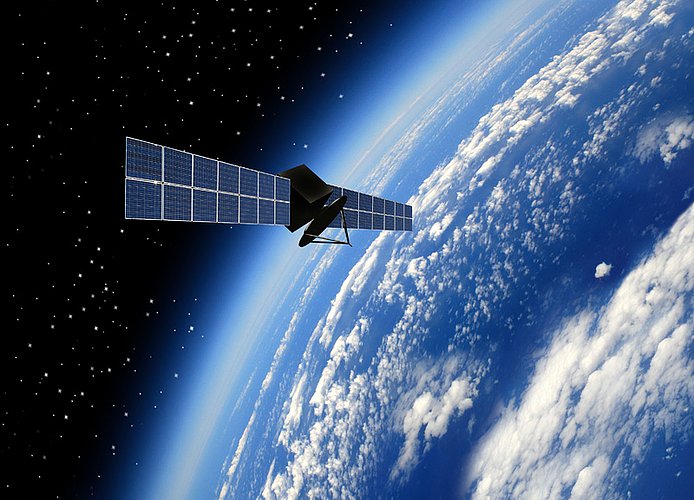Ready for Impact? Outlook regarding the soon to come EU Space Law – objectives and expectations
Article
This article was written with the assistance of Mr Daniel Budke, LL.B., M.A.
The draft of the first EU Space Law (EUSL) has been announced by the EU Commission for the end of March 2024. The EUSL is expected to cover thematically:
- the safety of space activities, including the safety to and from space ("Safety pillar"),
- the resilience of space-related activities and assets to physical, electronic and, above all, digital threats/attacks ("Resilience pillar") and
- the environmental sustainability ("Sustainability Pillar", together "Pillars").
The EU's space strategy is characterised by the requirement to achieve autonomy, security, resilience and sustainability objectives, while at the same time strengthening the European space industry in competition with third countries for customers, technology and investment. But under no circumstances to create additional burdens for stakeholders. Such impediments may trickle down from those directly affected to the entire value chain and may also affect the activities of private investors. The possible effects of the EUSL are therefore potentially considerable against the background of emerging conflicts of objectives.
The reactions to the announcement of the EUSL initiative were correspondingly ambivalent. From the political side in particular, such regulation is sometimes seen as a value (in itself), and in itself as a competitive advantage for the space industry in the EU. In addition, the envisaged pillars of "resilience" and "safety" in particular are seen as urgently needed and the EUSL as a whole as an opportunity to ensure a level playing field both within the EU and in relation to third countries. It is also hoped that the weight of a regulation which is supported by a common EU will, may foster global imitation pressure.
Others point to the particular regulatory sensitivity of the still developing space economy, the dangers of double regulation at national and EU level, the potential restriction of innovation, the risk of additional costs and regulatory bureaucracy, the need to avoid competitive disadvantages vis-à-vis third countries and, in some cases also very formally, to the restrictions of the Union's competence in space matters.
The draft EUSL, expected to be shared at the end of March, will need to be analysed in detail in light of the above. Stakeholders should make intensive use of opportunities to comment during (and outside of) consultations to support fact-based decision-making.
Important preliminary work on EU Level as well as statements, expectations, hopes, concerns and proposals from NewSpace stakeholders are summarised below with the aim to facilitate such an analysis. Reference is expressly made to further observations by experts on the upcoming EUSL from 2024 and to the statements on the EU's Targeted Consultation on the EUSL Initiative.
EU Competences in the Space Sector
The result may be disappointing for some: the EU may not be allowed to do everything, but it can do some things. There is no compelling reason to doubt the EU's competence in the area of „space“ in its entirety. At the competence level, however, it will depend on which policy form (more on this below) is chosen for the EUSL regarding which particular subjects and whether the EUSL actually comes in the form of a directly applicable regulation, as the wording chosen may point at, or grants the member states flexibility and some detail-competence at least regarding its implementation.
It is to be conceded, that there is no fundamental harmonisation competence of the EU within the scope of the general space competence under Art. 189 of the Treaty on the Functioning of the European Union ("TFEU"). Harmonisation measures based on the competences granted by Art. 189 TFEU are expressly excluded by the wording (Art. 189 para. 2 TFEU; Art. 4 para. 3 TFEU).
However, EU competences, including for space, may arise from Art. 114 (in conjunction with Art. 26) TFEU, the obligation to establish and maintain the functioning of the Union's internal market. The restrictions in Art. 189 (2) TFEU do not preclude this; these are not intended to exclude harmonisation on the basis of another general competence of the EU (as far as this compentence goes). Accordingly, the EUSL initiative is expressly based by the EU Commission on Art. 114 (rather than on Art. 189) TFEU, which may also be linked to harmonisation competences. The extent to which this applies, depending on the regulatory area, will (have to) be a more formal part of the debate on the EUSL draft.
Preparatory Work on the Pillars at (Union) level
Preliminary work on the content of the three pillars of the EUSL initiative mentioned above can be found in
- the EU Regulation on the "Establishment of the Union Space Programme and the European Union Agency for the Space Programme" (Regulation (EU) 2021/696 of 28/04/2021);
- the EU Space Strategy for Security and Defence and the related catalogue of measures (first presented on 10/03/2023, conclusions endorsed by the Council on 13/11/2023);
- the discussions and publications (already partially mentioned above) within the framework of the "EU approach on Space Traffic Management" and the "EU STM Stakeholder Mechanism" (EU Industry and Start-ups Forum (EISF)) based on it; and
- at UN level: the "Guidelines for long-term sustainability for Outer Space activities" from 2021
furthermore the Council conclusions or the (joint) communications of the Commission (and the High Representative for Foreign Affairs and Security Policy) in the areas of
- "Orientations for the European contribution to the definition of key principles for a global space economy" (11/11/2020)
- "An EU approach to space traffic management" (15/02/2022)
- "EU approach to space traffic management" (10/06/2022)
- "Fair and sustainable use of outer space" (23/05/2023)
- "Development of a cyber defence of the European Union" (23/05/2023).
In the areas of Space Surveillance & Tracking (SST) and Space Traffic Management (STM) in particular, far-reaching considerations have already been made at EU level as part of the STM Stakeholder Mechanism, including with regard to regulatory implementation. These appear to recommend a strong portion of (positively) incentivising "additional measures". Incentifying measures are also recommended within the framework of studies regarding the standardisation in the field of Space Traffic Managements. Such standardisation, according to respective studies, is proposed to be solely facilitated through intencifying measures, in particular through EU Labels. It can be assumed that regulations in the area of the Safety Pillar will at least take up the current status of the STM Stakeholder Mechanism and will not disregard the voluntary commitments made by stakeholders as part of the ESA Zero Debris Charter.
Requirements with regard to resilience in both the digital and non-digital sectors also arise from the NIS-2 and CER directives, both of which must be transposed into national law by 17 October 2024 (see here Update Data Protection No. 136). Space is categorised as a critical sector in both directives. However, the applicability of the regulations in connection with space is limited in each case to (operators of) ground infrastructure for the provision of space-based services. Furthermore, the regulations only apply from a certain company size. Providers of public electronic communications networks and the EU's own space resources are also excluded, which are already subject to the requirements of the 2021 EU Space Programme. Irrespective of these restrictions, it would be surprising if NIS 2/CER comparable mechanisms in the EUSL draft were not utilised as a basis for the resilience goals in the space sector as a whole.
Finally, the Sustainability Pillar is part of the general context of the European Green Deal. In this area, there are not only a large number of general and space-specific Ideas and Initiatives already, but also general regulations that apply to all economic players. In principle, companies in the space industry are already subject to the general EU regulations on sustainability in a variety of ways. With regard to the Sustainability Pillar, however, there is the particularity that the data situation on the environmental impact of space activities on Earth is still seen to be not sufficiently researched, at least in some areas, and that in some cases there is insufficient data available for specific measures. The EU label propagated as part of the deliberations on the development of standards for STM is also proposed as an incentivizing measure for sustainability aspects.
EUSL Targeted Consultation
The "preparatory work" described above is reflected in the introduction and explanation of the "Targeted Consultation on the EUSL", which was open for comments from 17 October 2023 to 28 November 2023 ("EUSL Consultation"). As part of the EUSL Consultation, comments could be submitted on the following issues
- "Safety (Pillar) Related Questions", concerning safety from hazards regarding space activities. The focus was on specific SMT and SST objectives such as regulations to minimise collision risks and the prevention or removal of debris and disused space objects and – as a prerequisite for this – their tracking. In view of the already advanced considerations on STM and SST at EU level and the constantly increasing risk potential, the question of the need for regulation is probably related to the need for a specific Union driven regulation.
- "Resilience (Pillar) Related Questions", concerning the security of space-related facilities, assets and systems against physical, electronic and digital risks, including cybersecurity. Cybersecurity-related questions are clearly at the centre of the EUSL consultation with regard to the Resilience Pillar. It is interesting to note that the focus of the questions also includes space-related facilities on Earth and that the issue of sufficiently developed cybersecurity regulation is being discussed via the existing general regulations at EU and national level (NIS 2/CER). In contrast to the other question areas, an assessment of the significance of the expected costs of the planned measures was also requested for the resilience pillar.
- "Sustainability (Pillar) Related Questions", concerning the impact of space activities on the Earth's ecosystem. Reference is made to the environmental impact of the entire life cycle of activities and space objects. A relatively large number of the questions in the EUSL Consultation in this area also deal with the effects of the increasing number of satellites and space activities on astronomy ("quiet and clear sky"). The EUSL Consultation also asks very specifically how the need for a standardised method for determining the eco-footprint of space activities is assessed.
Policy Options of the EUSL Consultation
In addition to the pillar-related result selection questions of the EUSL Consultation, at least as important, various "policy" options were provided for selection and explained comparatively extensively and in unusual detail with regard to the respective measures:
- "Policy Option 1" envisages non-binding recommendations on the basis of fact-finding regarding the completeness of existing regulation and the development of incentivising solutions, e. g. in the form of labels or innovative smart policies. Recommendations could relate to national policies, standards, and/or specific best practices. The Union and the member states could work together in this. Labels developed within this framework could be certified at EU level in order to avoid "green washing". Monitoring would, however, be carried out by the respective countries. The detailed means were still kept open in the description of the policies and thus also provide opportunity for innovative forms of incentivisation and alternative policy solutions.
- "Policy Option 2" would, as the most far-reaching regulation, provide for binding, harmonising EU regulations. The requirements resulting from the regulation would have to be adopted by the nation states in their existing licensing systems. Compliance with EU requirements could therefore ultimately be a prerequisite for entry into space activities (to be defined). In addition, special "bodies" would be set up to "support" the nation states in complying with EU requirements on behalf of the EU. According to the explanation, the EU requirements in this alternative are aimed at ensuring a level playing field within the EU and also in relation to third countries. The binding requirements would also be applied to competitors from third countries that provide services in the EU in a mechanism that is not explained in detail. By definition, this alternative would have a harmonising character. Accordingly, in the explanation of this alternative, the EU Commission has noticeable been emphasised the objective of establishing/maintaining a functioning internal market (for space activities), i. e. a reference to Art 114, (26) TFEU.
- "Policy Option 2+" is said to build on Policy Option 2, i. e. on binding and harmonised regulations, but is intended to supplement these with additional (non-binding) guidelines and incentives (comparable to Option 1) for „the extra mile“. It is unclear whether the binding part in this alternative will fall short of the regulations in Option 2 and will therefore be partially (and not just more extensively) replaced by guidelines and proposals, or whether the non-binding part (the "+" part) will exclusively comprise even more extensive regulations. In addition, new forms of incentivisation would be developed by the member states and the EU with the participation of the stakeholders concerned. Finally, additional support and a whole set of regulations and measurers would be provided for the space industry for research and development with regard to the three pillars in this Policy Option.
- According to the explanation, "Policy Option 3" is seen in connection with Policy Option 2+. This assumes that only a binding, harmonising regulatory framework provides a credible negotiating mandate for bilateral solutions. Policy Option 3 would provide for supplementary negotiating mandates at Union level, under which the EU would seek (bilateral) agreements on all three pillars at international level in a manner comparable to the Artemis Accords. The content of these agreements would be based on a binding, harmonised EU position.
Perspectives of NewSpace Stakeholders
The predominant reactions from opportunistically surveyed NewSpace stakeholders and from a number of published statements can be summarised (significantly condensed) as follows:
- Understanding that all three pillars are fundamentally "addressed" and that purely national initiatives, particularly for the resilience pillar and the safety pillar, will not be sufficient in the long term without (binding) coordination;
- The need to ensure a level playing field both within the EU, but especially in relation to competitors outside the EU, and to avoid forum shopping through a broad scope of the EUSL that also covers competitors from third countries;
- Demand for differentiated transition periods so as not to jeopardise ongoing projects and planning;
- Proposal for special protection regulations – in particular, but not only for SMEs – with regard to general applicability and mitigation of economic disadvantages;
- Fears that, contrary to the warning described above, bureaucracy and additional costs – the relevance of which will affect SMEs in particular and scare off investors for start-ups and scale-ups – will arise in any case, which will grow into barriers to entry for young companies and investors in the EU and will in fact not be fully offset.
In Detail:
Safety Pillar
- Contributing stakeholders consistently attach great importance to collision protection and the "space debris problem" and appear to be in favour of harmonized requirements for the development of minimum standards with regard to the safety pillar. Softer incentive instruments to achieve a higher level of protection, such as the possibility of acquiring corresponding certifications/labels or access to funding, are seen as a suitable addition (Policy Option 2+). In terms of risk-based differentiation, it is also proposed that the respective specifications (e. g. on the permissible quantity of objects remaining in orbit and their lifespan or orbit-orientated solutions) be adapted to a defined hazard potential of the mission profile.
- It is also considered necessary in some cases to establish requirements for the coordination, monitoring and tracking of space objects and thus create the conditions for a European market for space situational awareness (SSA) data. A mandatory registration with a (European) Collision Avoidance Entity is sometimes proposed as an instrument for this.
- In some cases, however, reference is made to difficulties in implementing the requirements for players based outside the EU. As a result, the sceptics of a binding solution also refer to an approach with regard to the safety pillar that is limited to incentive instruments or at least essentially characterised by alternative policy instruments (Policy Option 1 or Policy Option 2+ with a very limited mandatory part).
Resilience Pillar
- The resilience of space systems – both ground-based and orbital – against physical, electronic and cyber-attacks is also seen by many stakeholders as a must-have that needs to be considered by recognising the (entire) space economy as a critical sector.
- In addition to a definition of resilience adapted to space missions, the EUSL should also focus on the relevant supply chains in order to prevent the installation of components with backdoors, for example. A security-by-design approach in the area of software development, similar to that of the NIS2 Directive, is strongly favoured. Likewise, the obligation or at least incentives for secure systems for communication with satellites (e. g. optical systems).
- To implement these requirements, platforms for the (mandatory) exchange of data on security incidents and guidelines on best practices as well as general incentivisation and cooperation in the expansion of cyber security capacities are considered useful.
Sustainability Pillar
- The inclusion of the concept of sustainability in the EUSL makes the EU a pioneer for environmentally friendly space activities in the eyes of various stakeholders. Comments on this pillar focus primarily on aspects such as the decarbonisation of rocket fuels, the reduction of impacts on airspace when re-entering from orbit or the possible harmful impact of burnt-out rocket stages on marine ecosystems.
- Stakeholders also consider the entire ecological footprint of the space economy. A life cycle assessment, as envisaged in Policy Option 2 of the EUSL consultation, is indeed favoured as a measure for a necessary stocktaking by stakeholders specifically focused on sustainability. However, other contributions also point out to the associated burdens, particularly for SMEs. In many comments, addressing the sustainability pillar by the EUSL is more likely and predominantly located within the framework of Policy Option 1 due to the above and the need for further fact finding that is perceived as additionally necessary (insufficient data available for many areas).
Additional Topics
- Even if the EUSL is extended to non-European services within the EU, stakeholders fear disadvantages for EU services in third countries. Such disadvantages could threaten third markets that provide for lower charges. These burdens would have to be cushioned by fall-back measures such as additional funding, tax benefits or generous transitional arrangements, particularly for missions already underway.
- In order to prevent Europe from falling further behind, a strategy of favouring domestic (start-up) providers is proposed, i. e. a de facto EU first strategy.
- Finally, legal certainty through standardised liability regulations and clear framework conditions for the distribution of liability in international space activities is required in order to reduce risks and ensure a level playing field.
- Finally, around the three pillars, various regulations or at least clarifications are also required for other aspects affected by activities in the space sector. These include, in particular, issues relating to antitrust law, foreign investment from countries outside the EU and public procurement law.
Conclusion
As much as the expectations differ, it may be noticed that a solution regarding dangers for "all" must in principle also be accepted, as bringing uniform coordination and joint control. Particularly noteworthy in this context is the in-depth and detailed explanation of the considered policy option with regard to implementation in various areas of the individual Pillars. In addition to the type of policy, the final approach (regulation vs. directive) will also be „interesting“.
In terms of content, there seems to be fundamental agreement between many stakeholders that there should be differentiating but also uniform solutions, particularly in the areas of the safety and resilience pillars, in order to effectively counter risks which cannot be deflected individually. This is all the more important as it is precisely in these two areas that an ultimately effective solution cannot be achieved by the EU alone, and for EU solutions to be negotiated with stakeholders in other regions, such EU solutions must finally exist. Solutions based on Policy Option 2+ (including appropriate support measures and deadlines and with a strong emphasize on non-binding solutions) are therefore considered to be fundamentally sensible for these two pillars. Differences, however, exist (or are unclear) regarding the scope of the binding parts versus the flexible parts under Policy Option 2+, guidance part of different aspects of the Resilience and the Safety Pillar.
The perspective of stakeholders with regard to the Sustainability Pillar is much more inconsistent. The fundamental goal of sustainability is practically uniformly supported. However, there are very different assessments of the necessary balance between thorough sustainability considerations and the promotion of an innovative NewSpace Economy. In particular, the existence of sufficient knowledge of the facts for binding regulations and thus – in legal categories – the necessity and suitability of detailed, binding regulations for various sub-areas (e. g. standards for the entire value chain, effects of re-entry for the atmosphere or maritime regions, standards for rocket engines and manufacturing materials) are disputed by some. Even if such solutions are already in advanced planning or implementation at a visible number of companies. For this reason and for reasons of technology flexibility, solutions regarding the Sustainability Pillar are often seen in the area of Policy Option 1 (i. e. guidelines, smart incentives or labels or comparable).
To summarise, in addition to the generally applicable questions of necessity and proportionality, the EUSL will be measured against the following criteria by affected stakeholders:
- Avoidance of additional costs and bureaucratic burdens for private companies, not as a mere populistic platitude, but as a fundamental requirement to find the right balance in order to protect a developing economy, to foster innovative technology by smart policies rather than by un-flexible micro-management by regulation and to ultimately be able to reach the wider objectives of the EU Space Strategy.
- Appropriate differentiation not only between the pillars addressed but also with regard to the specific hazard impact of the specific activity. Actual differences in impact must be able to lead to differentiated solutions.
- Incentivisation and alternative policy forms as a central building block, in order to give room for flexible technological development and self-regulation to the greatest possible extent through suitable positive and negative economic incentivisation and rigid, binding regulations only as a basis for obligations and as targets.
- Economic cushioning of the additional burdens arising indirectly along the entire value chain at all affected levels.
- Gradual entry into force of any binding regulations in terms of time and content in order to allow time for the necessary clarification of facts in some areas and for technological progress and the ongoing development of solutions.
- Size thresholds for those affected, to protect particular affected activities and companies and particular regulation sensitive SMEs, start-ups and scale-ups.
- Extension to services from third countries in order to compensate for any competitive disadvantages for services within the EU in particular.
- Support not only through standard subsidies and tax relief for R&D costs and investments, but also through guarantees for production processes and cushioning of indirect economic burdens such as insurance costs as well as considerable acceleration and streamlining of the processes for subsidies and grants.
References/Further Information
- Feedback Collection gathered by the EU Commission regarding the EUSL Consultation
- Further 2024 Policy Comments to the EUSL: cep – Centrum für europäische Politik vom 10. Februar 2024; Strategic Autonomy in EU Space Policy and Laetitia Cesari, McGill University, 16 February 2024, Developing an EU Space Law: the process of harmonising national regulations
- Call for Evidence for an Impact Assessment: European Commission: Call for Evidence for an Impact Assessment, Ref. Ares(2023)7052281, 17. Oktober 2023, 2
- European Commission: Targeted stakeholder consultation and respective Policy Options

![[Translate to English:]](/fileadmin/_processed_/3/1/csm_Lenz__Andreas_web_4a53ae3252.jpg)
![[Translate to English:]](/fileadmin/_processed_/c/7/csm_Jansen__Thomas_print_e14169a709.jpg)








